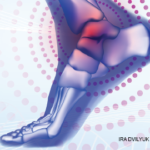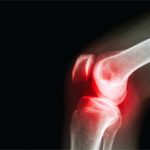Similarly, improved function has been demonstrated by using foot orthotics in those with knee OA.7,8 Gross and Foxworth’s literature review (and personal experiences) showed a reduction in patellofemoral pain when abnormal pronation and other malalignment issues are corrected.9 A far more extensive literature review was conducted by Marks and Penton, who found strong evidence for a reduction in symptoms and improvement in biomechanics in those with knee OA.10 Krohn demonstrated improvement in those with knee OA by combining foot orthotics with knee bracing.11 When foot orthotics were added to other treatment modalities, 76.5% of Saxena and Haddad’s patients with patellofemoral pain syndrome had a reduction in symptoms, while Rubin and Menz showed that, although greater reduction was achieved in less severe cases, at six weeks, all subjects with knee OA had demonstrated some reduction in symptoms.12,13 Johnston and Gross’s study showed significant improvements in patellofemoral pain syndrome cases in pain and stiffness just two weeks after treatment with custom foot inserts.14 Keating et al found, as I have, that sometimes even in severe cases of knee OA, where there was complete loss of joint space and bony erosion, some patients showed improvement in symptoms.15
These improvements are not limited to just OA knee cases. Dananberg and Guiliano showed that patients treated with custom foot inserts experienced more than twice the alleviation of chronic low back pain for twice as long when compared with traditional modes of therapy.16 Children with juvenile RA have been shown to have significant improvements in pain, level of disability, and function with custom foot inserts.17 The efficacy of inserts in adult RA and other conditions, such as hemophilia, has also been shown.18-26 Beyond improvements in mechanics and symptoms, custom foot orthotics can decrease the need for nonsteroidal antiinflammatory drugs (NSAIDs) and other medications. Brouwer et al found that even strapping the subtalar joint to prevent excessive pronation cause significant improvements in OA knee pain during bed rest and ambulation.27 Gélis et al showed that those treated with foot inserts for knee OA consumed fewer NSAIDs than the placebo group for up to two years.28
Despite the help we offer patients by alleviating symptoms with medication and joint replacement, we have not been able to prevent or stop the progression of OA. By learning to incorporate a basic, structural evaluation into current examinations and to recognize and correct significant pathomechanic problems, I believe that we can begin to offer a treatment program that addresses the true etiology of OA. And when you consider the powerful indirect effects treating OA can have on diabetes, obesity, hypertension, and the other medical problems plaguing our society, you see that improving function is critically important.

